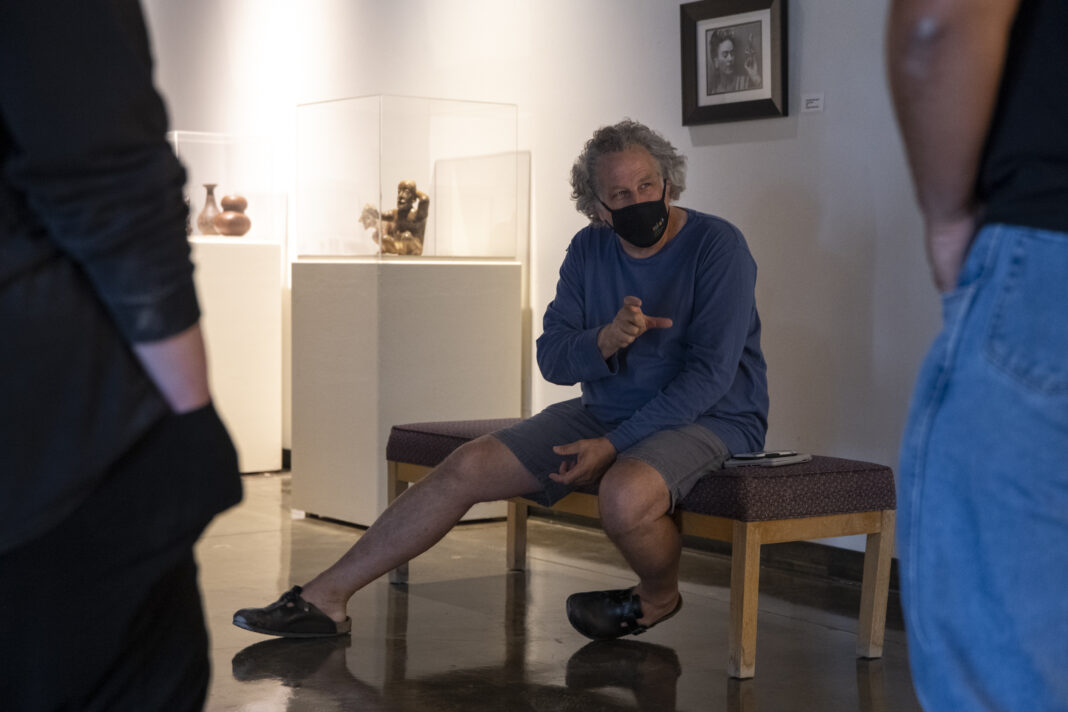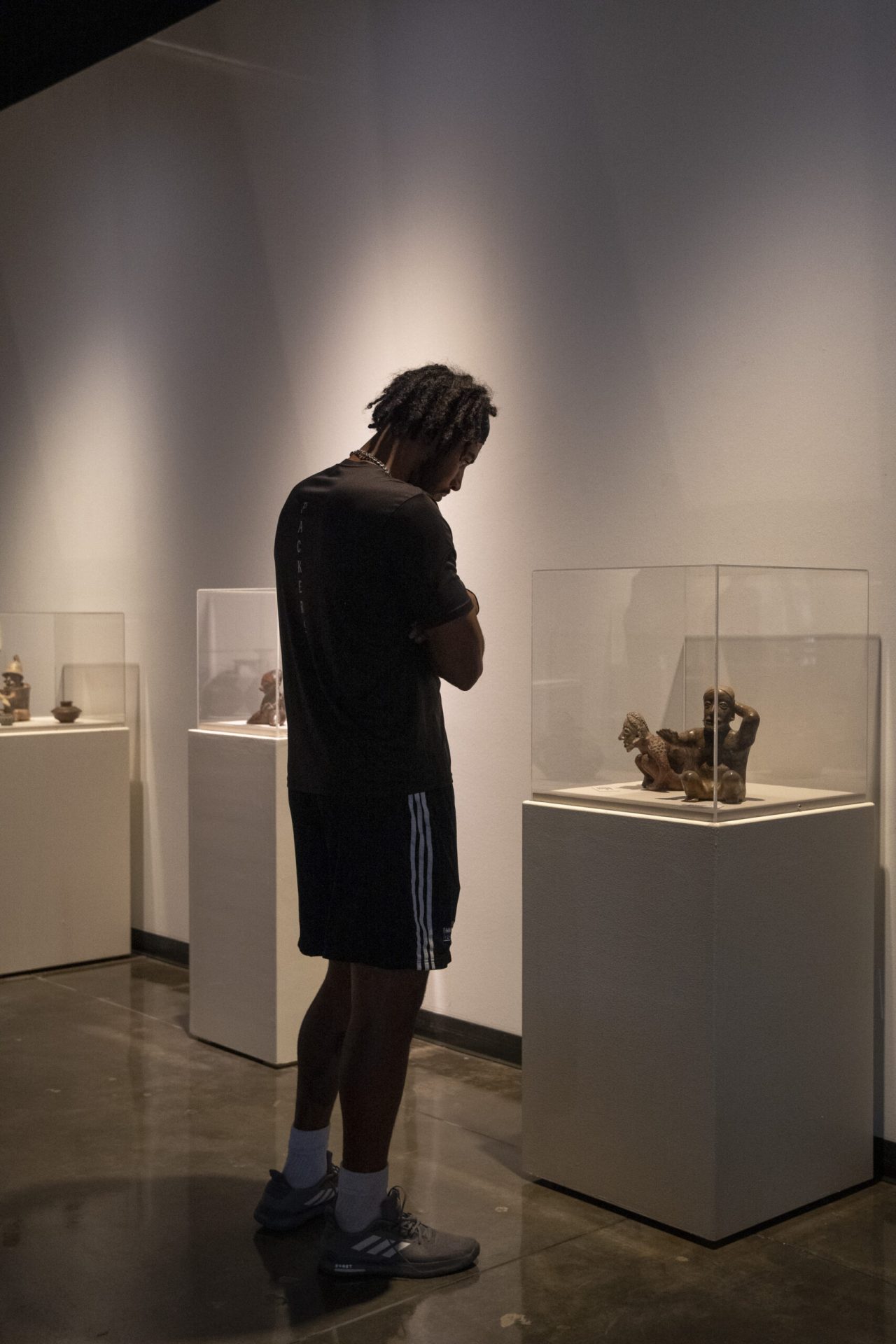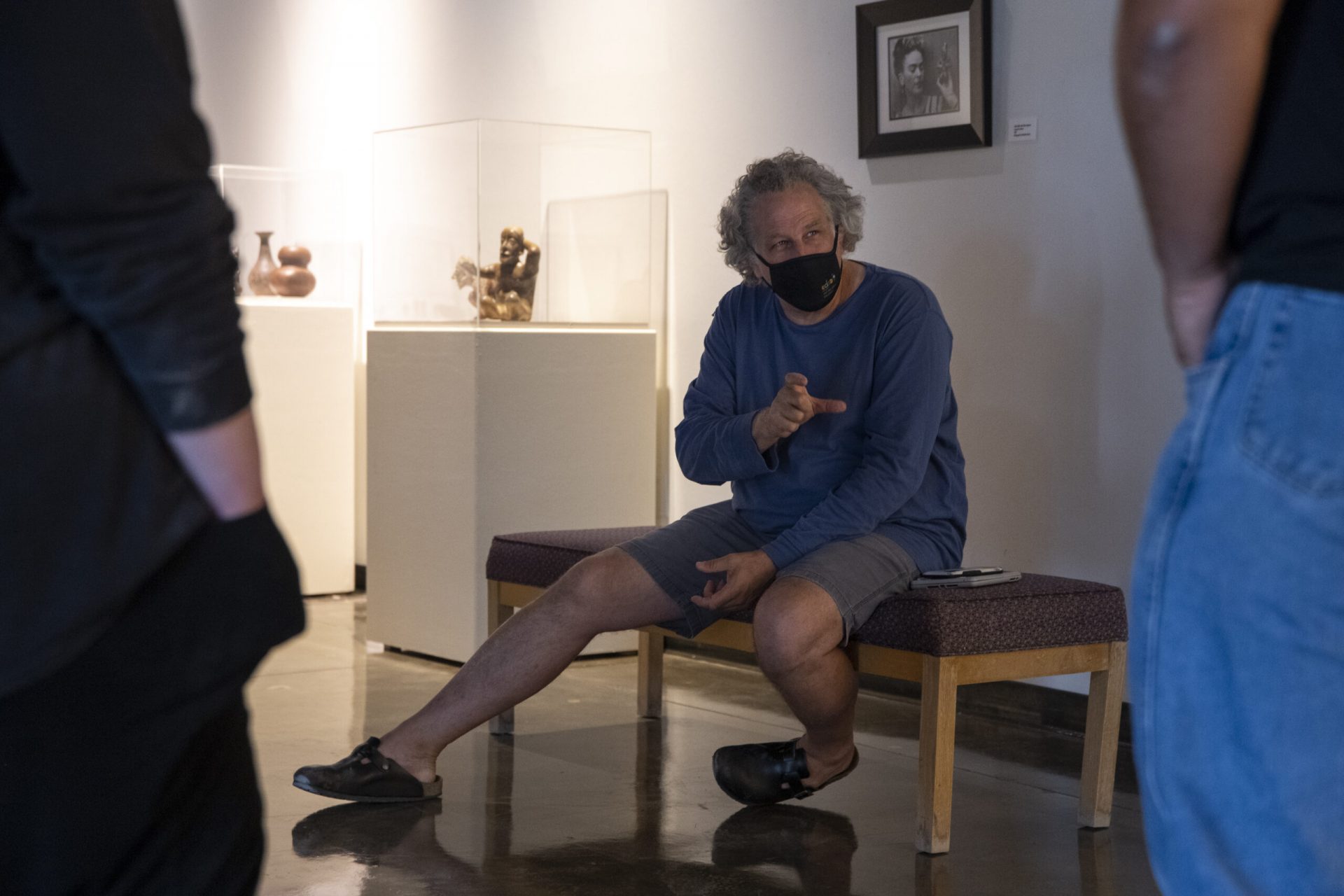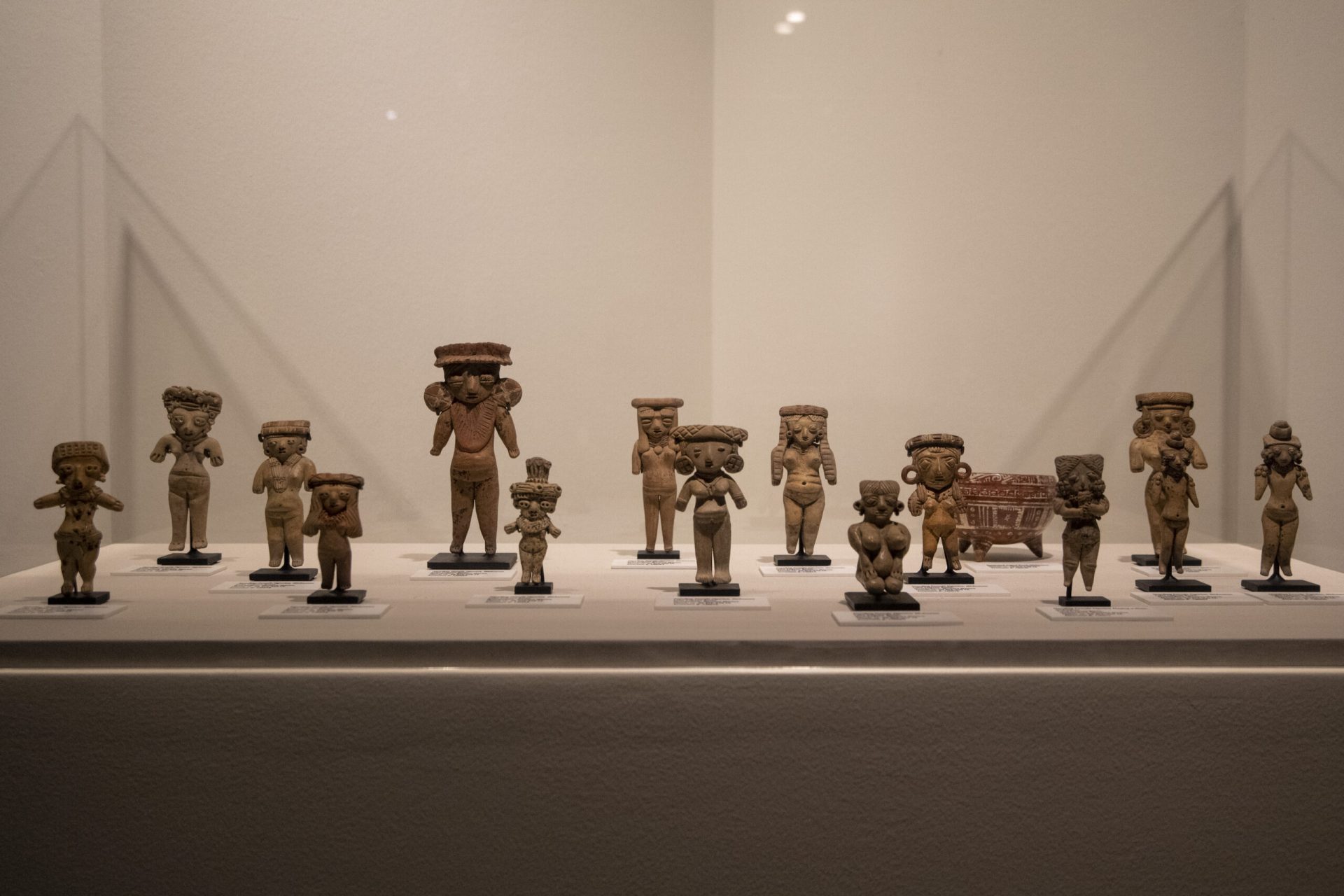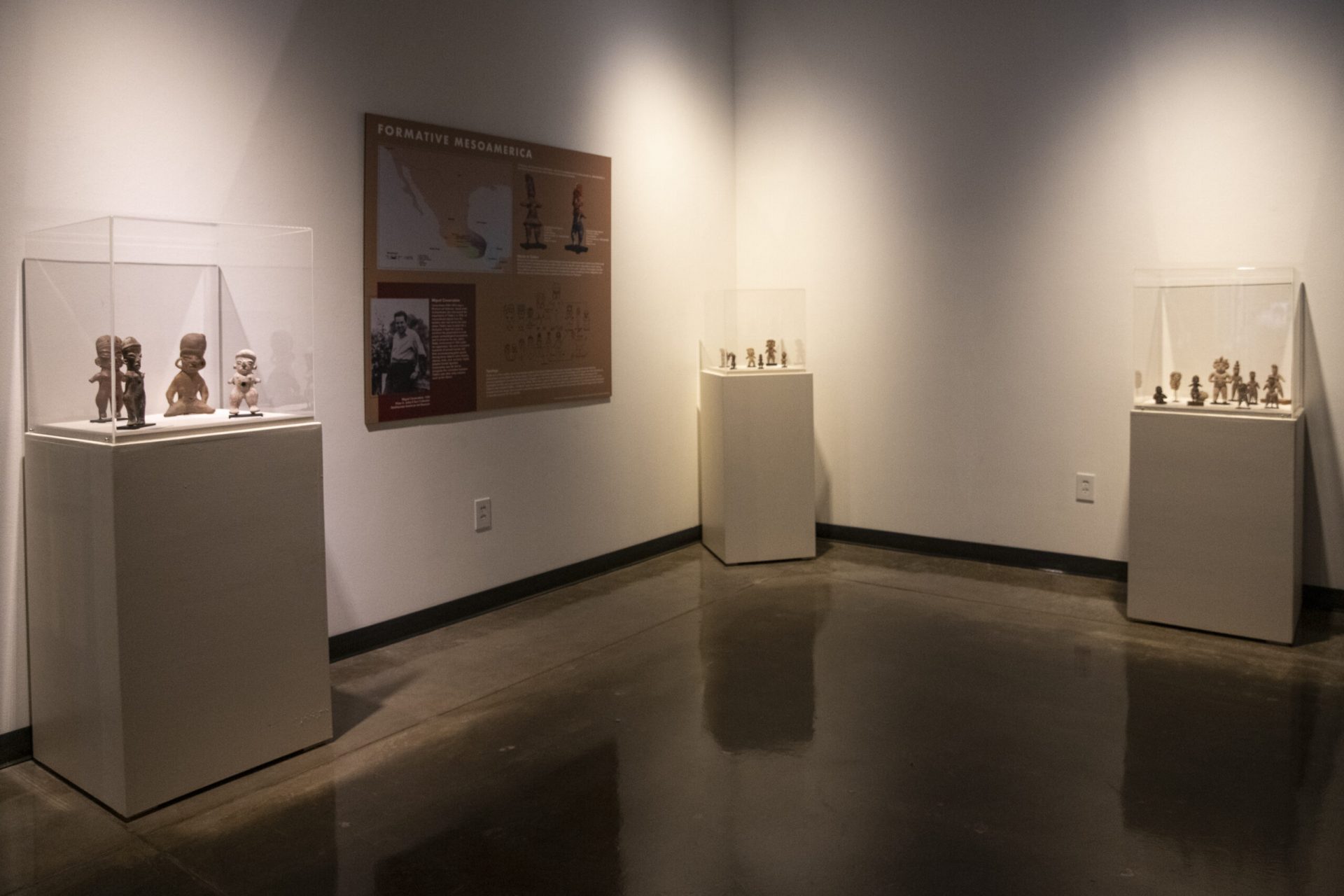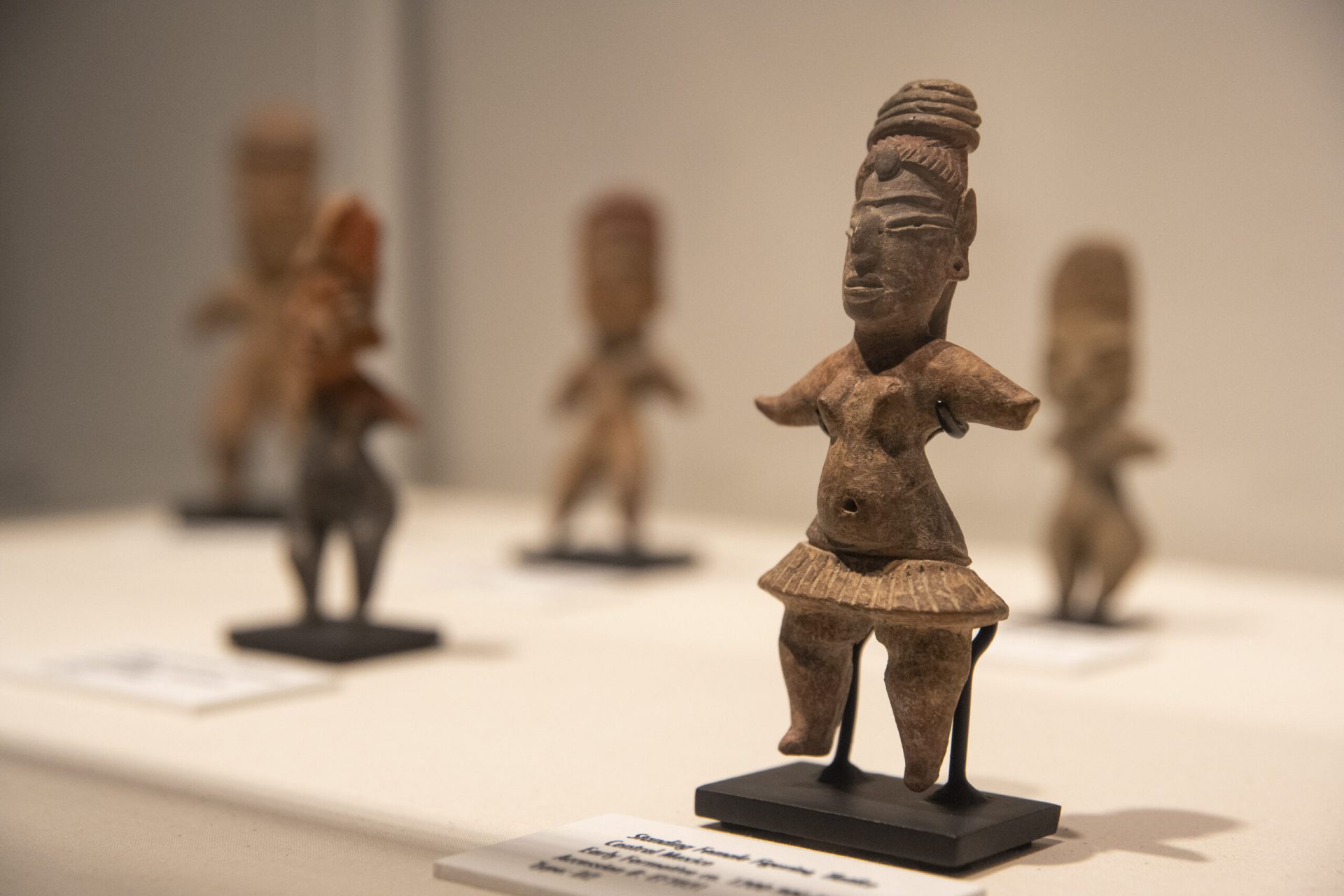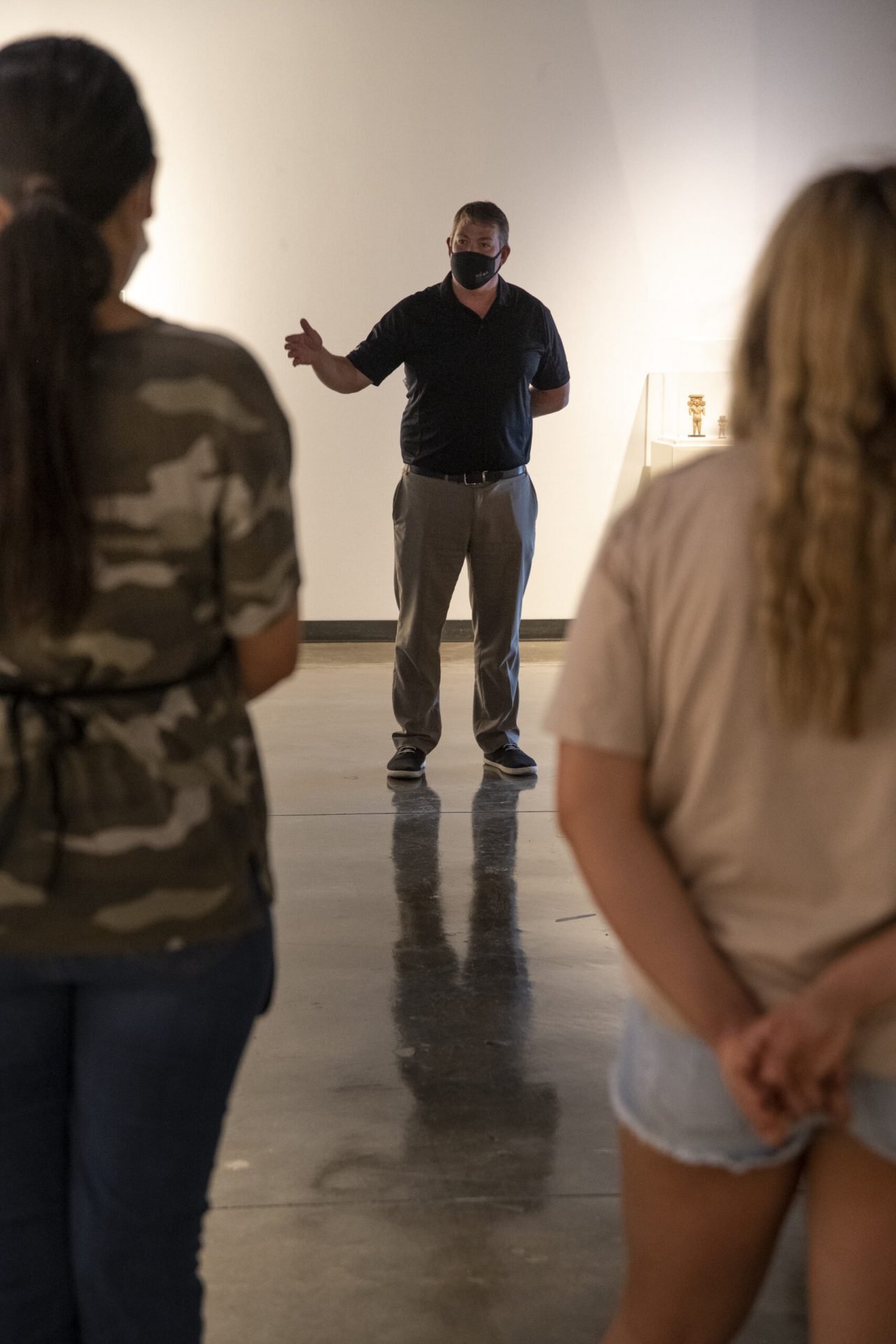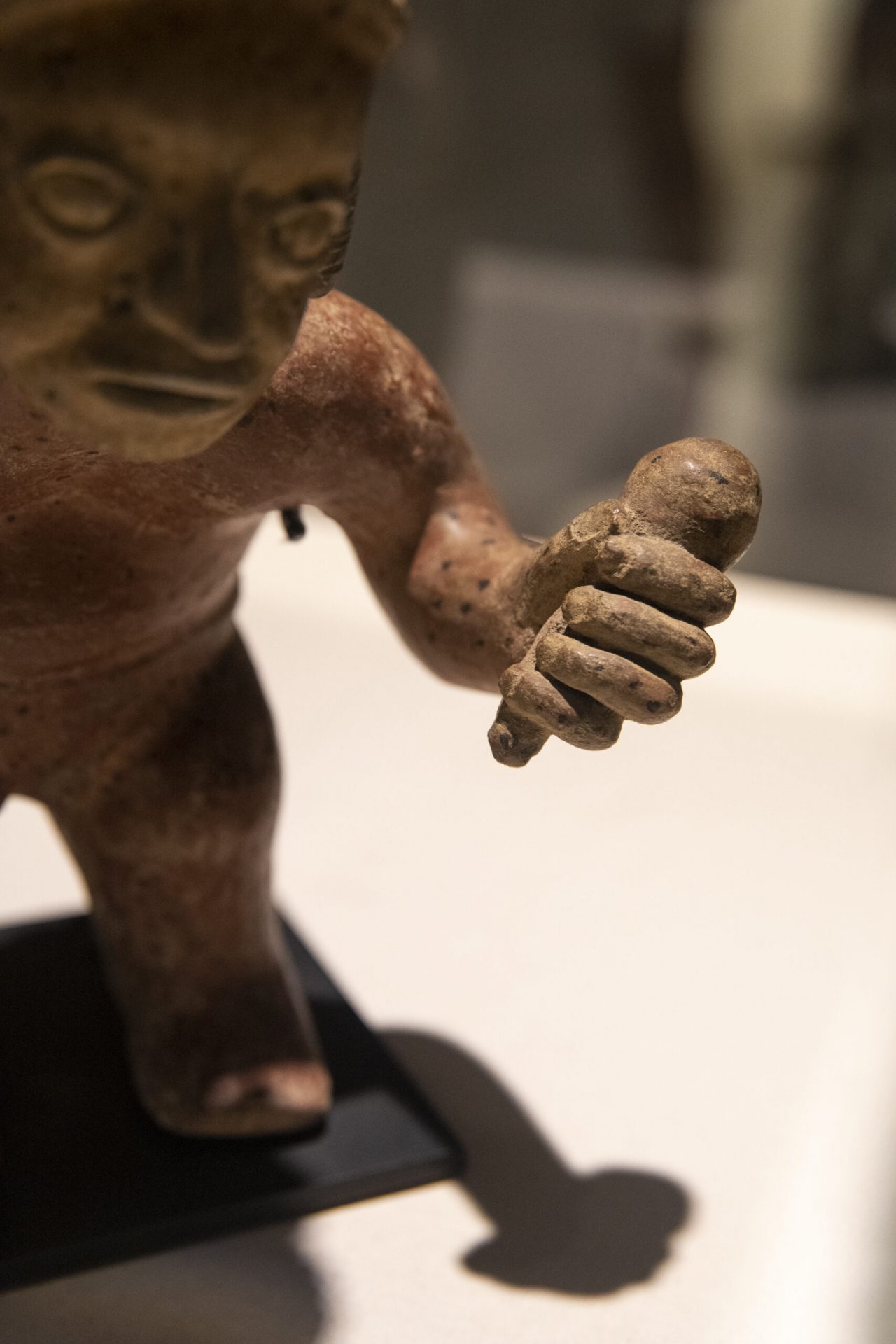“Figure-ing Out the Past: The Transcendent Embodiment of Ancient Mexican Art,” is now on display at the Nancy Fyfe Cardozier Gallery at the University of Texas Permian Basin.
Owned by Ector County ISD Chief Innovation Officer Jason Osborne, it includes about 100 clay figures. They will be on display through Nov. 4.
Gallery Director Amy Kim wrote in a booklet about the exhibit that it mainly consists of two groups of artwork: selections from the early formative period (1200-900 BCE) artworks from and influenced by Tlatico (now Mexico City) and works from West Mexico (300 BCE-350 CE).
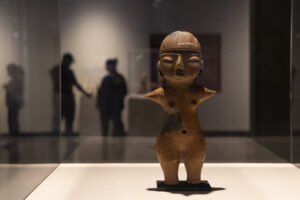
Associate Professor of Art Chris Stanley, who is also a member of the ECISD Board of Trustees, brought some of his students to view the artifacts and ask questions of Osborne.
“… He’s what we call a polymath, so his intelligence is in so many different areas. He was hired by our school district to help us move into the 21st century. He’s fascinated with everything …,” Stanley said.
One of the things Osborne does is collect things like art and tools.
“… From what I know of this, he became just absolutely fixated with these cultures that are kind of forgotten,” Stanley said.
The late actor Vincent Price owned some of these figures and allowed them to be used in ads for Kahlúa coffee liqueur.
People thought that if Price liked the artifacts, they would like to have them, too, Stanley said.
“… The more popular an artifact is and the more available they are, the more people are going to want it. And then along with that came forgeries. …,” Stanley said.
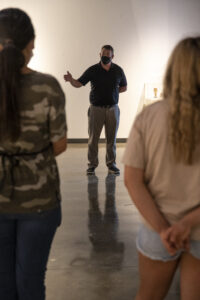
Osborne said forgers would try to imitate mineral blooms on the clay, so museums would have to have experts who could determine if it was real or fake.
When he first moved to Texas, Osborne said he was intrigued with Mexico because he’d never lived this close to it before.
“… At the time, I’d never been in Mexico so I was very curious because ever since I was very little, I was very curious about anthropology and paleontology, and in just research in general. … Not long after coming to Texas, I had access to an 800,000 acre ranch in North Mexico in the Chihuahuan mountains. … A lot of it was unexplored, untouched. … There’s multiple goat branches up in this property, so I was up in these mountains and saw undocumented petroglyphs and things that are still in place from thousands of years ago. I started to do more and more and more research in Mexico and was really interested in some of the earliest civilizations … some of which is what you see here in this display and these tombs and shaft tomb art pieces. Every single piece that’s in here came from either a tomb or a shaft tomb; two different things. You think of a tomb or a grave as an open pit area covered, versus a shaft tomb, which is down into shaft,” Osborne said.
Egyptian tombs were similar and they existed in two different parts of the world.
“But they were thinking the same way. And you know, what works in our human mind. What works in our human mind in unison is pretty fascinating, even to the tools that they would use …,” Osborne added.
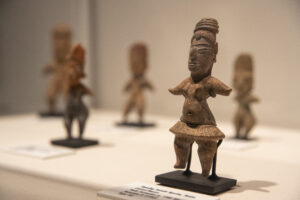
From a research standpoint, Osborne said he was interested in the genetic traits of the art itself and the people that live in these areas today.
“… The only thing left to study is the pieces themselves and what they have left behind,” he added.
As pieces gained popularity, Hollywood started picking up on some of these pieces back in the 50s.
As a result of demand, there were more tomb raids in Mexico.
“… It was legal to continue this process and we were able to do this process all the way up to about 1973 when the UNESCO agreement happened,” Osborne said. “Every piece that’s in here is within the UNESCO agreement. They were all collected and they were all curated, most of them prior to 1960, or more in the 50s and 60s. That was another thing that I really made sure is the provenance of the pieces were … legal to be obtained and there was documentation of it. And then I can bring it and pull it together to educate people,” he added.
“This is history. It’s a history lesson …,” Osborne said.
Osborne said he has done a lot of work in paleontology and has always been interested in finding things and discovery.
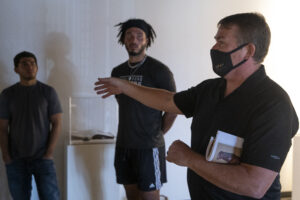
In his job with ECISD, Osborne said he pays a lot of attention to tomorrow’s education, what can be done to promote tomorrow’s careers and how they can partner with people outside the district to give students opportunities that will ultimately set them up for success.
“We believe that innovation approach, or innovative approach, to how we do education,” Osborne said. “I spent a lot of time researching and thinking of new ways of bringing really good things to students to get them excited about education. We recently started with a neuroscience course where kids are in virtual reality. We are solving mysteries of the brain in partnership with seven universities.”
He works with 26 universities, but seven in just one classroom.
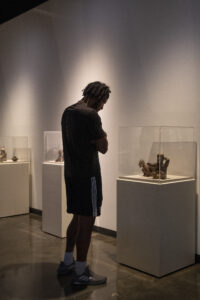
Senior Ed O’Bannon, an art minor, said seeing the figurines was interesting from an artistic and historical standpoint in the way it connects with anthropology and “just the history of linking cultures and seeing how relevant it is today; some of the techniques that are still in use.
“I think it’s pretty fascinating how some things are timeless, especially in art and history has a way of repeating itself,” O’Bannon said.
Jonathan Pallanes, a UTPB senior, said he liked the physical features of the figurines “like the eyes and how slanted they were.”
“Strangely enough I like to look at some of these ancient artifacts from other cultures and I’ve seen the Mayan personally, the Aztec temples personally. And some of those shapes of the heads really got me interested in how elongated they were …,” Pallanes said.
Iris Fierro, director of Student Success, is auditing Stanley’s ceramics class.
“… It’s nice to hear the perspective from Mr. Osborne and getting the background,” Fierro said. “I think it just makes the works of art a lot more meaningful. At the same time, we are a ceramics class here from non-art students and I think, having already been in the process of working with ceramics and learning the different techniques, I look at this with a completely different set of eyes … It’s not my first exhibit to see ceramic pieces, but I think that having gone through this class and also getting the personal experience of hearing Mr. Osborne is more meaningful.”
Osborne said he acquired the pieces mostly through auction houses and trying to piece them together for a more curated collection that “had more meaning than just random pieces, so it’s very concentrated.”
Having it at the Nancy Fyfe Cardozier Gallery, he said, is an ideal opportunity to put the collection in front of students and the community.
When he was in paleontology, Osborne said, so often things were buried and put away in archives and people never got a chance to see them and touch them.
“So having an opportunity to do that is huge and having a firm belief in education and an understanding of our world, it’s a great opportunity …,” he added.

